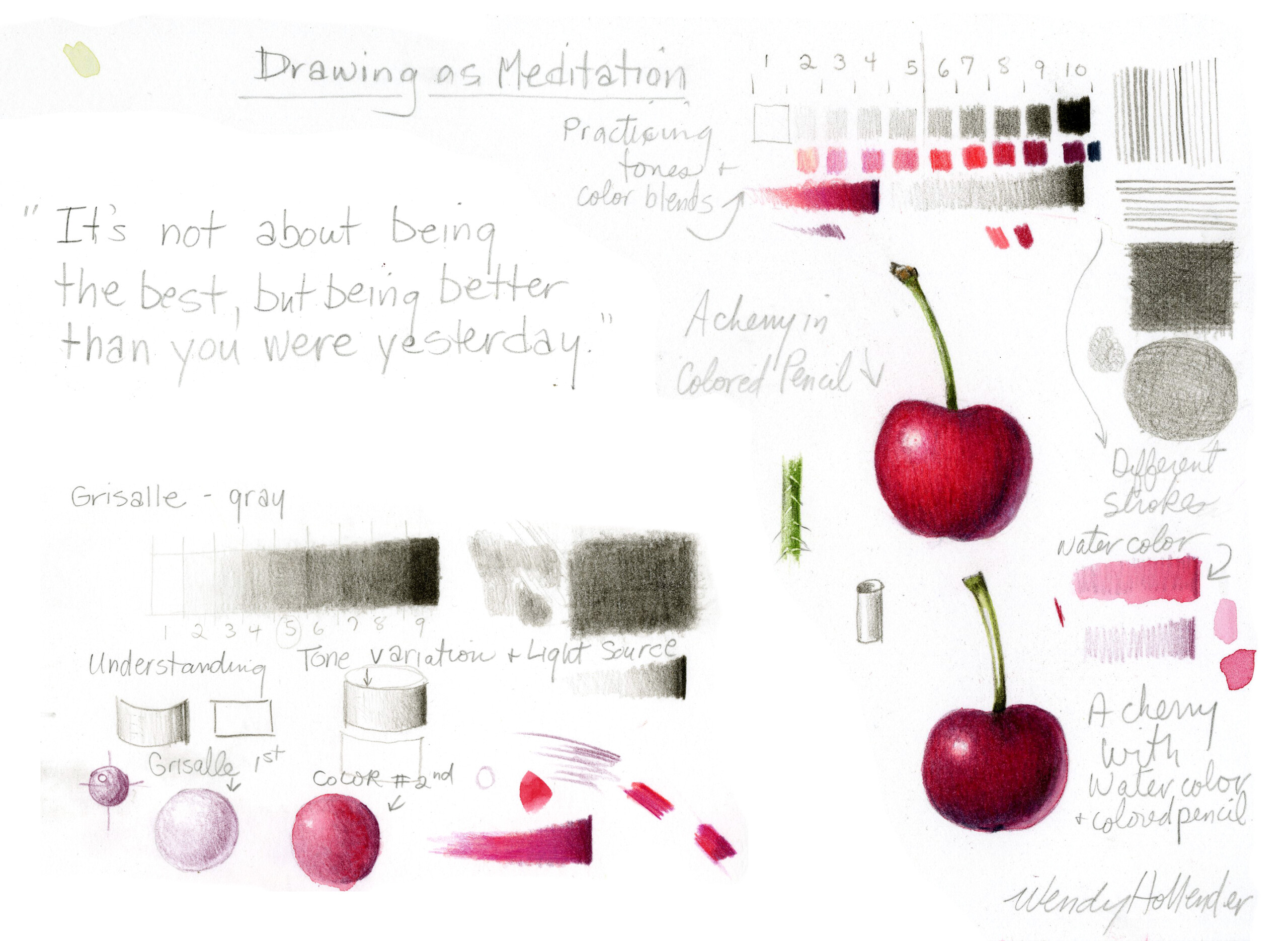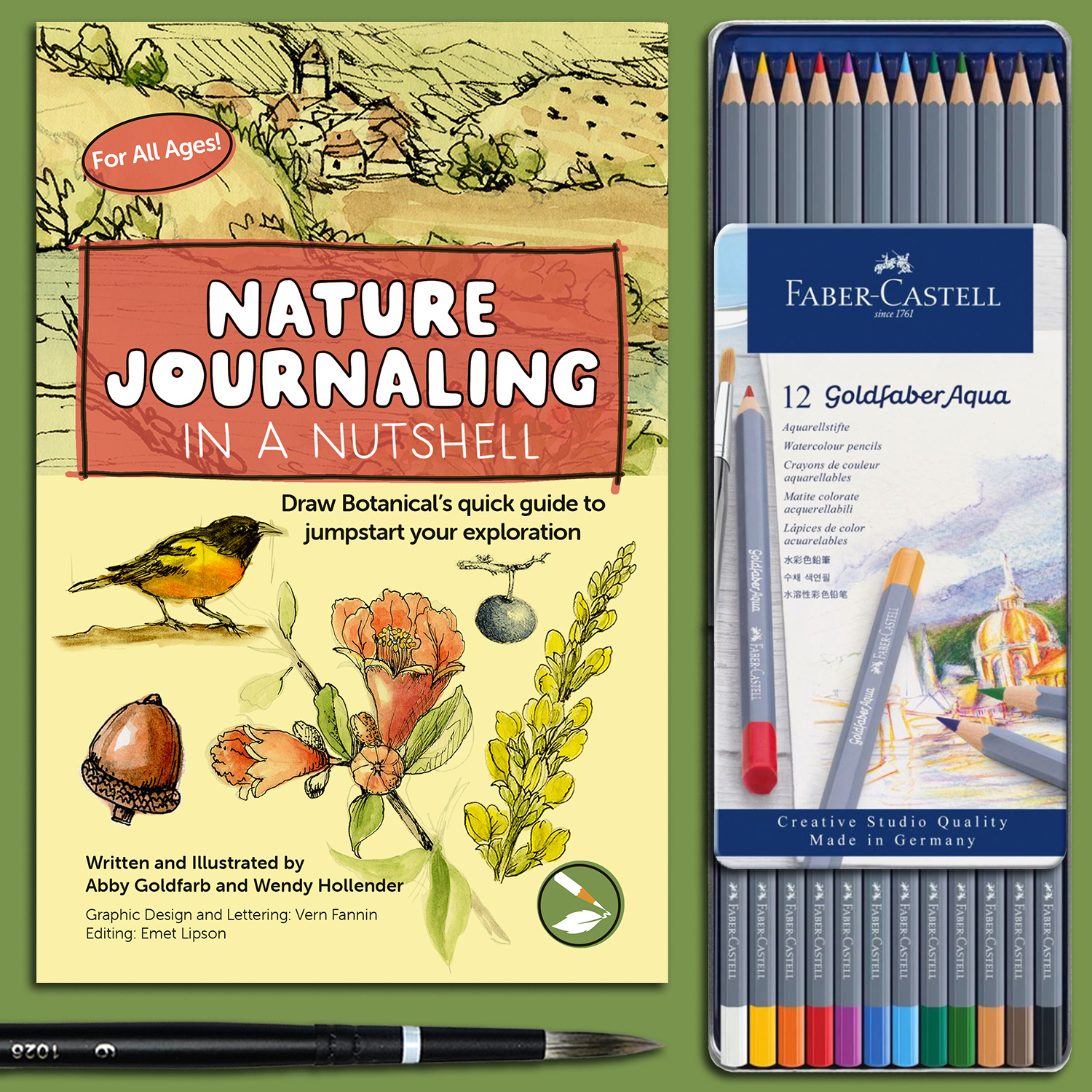Article by Wendy Hollender, featured by the American Institute of Stress in their magazine, Contentment (Volume 12, Number 1, Spring 2023). View this magazine issue as pages or spreads.
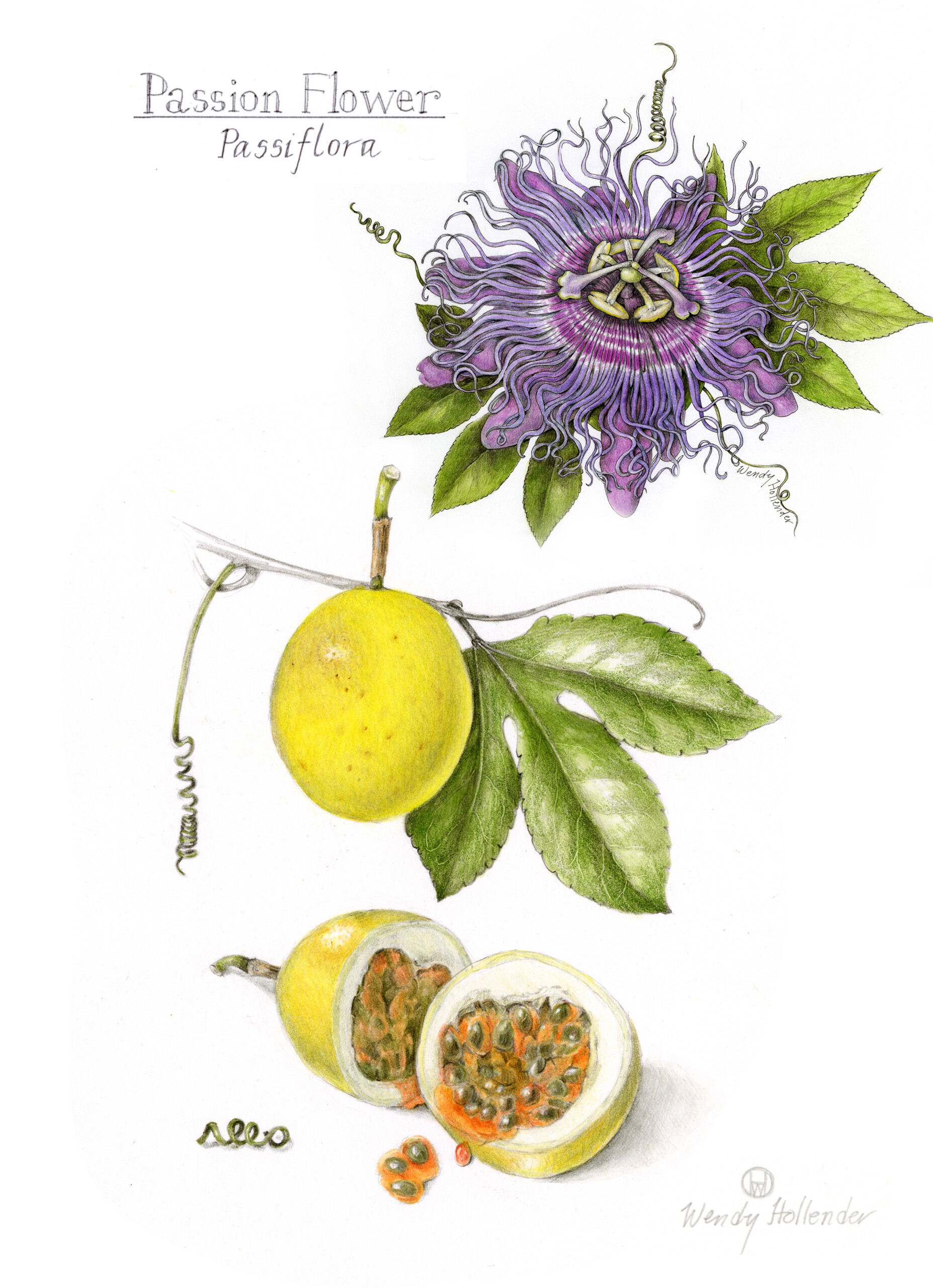
I have been taking my cue from plants for 25 years now. Before the advent of cameras, botanical illustrations were the only method to visually document plants, so accuracy was most important. Though photographic technology has developed considerably, I think botanical illustrations are still the best way to describe the intricate details of any plant. In the past, botanical illustrators aimed to capture every detail so realistically that you could almost smell the fragrance emanating from the flowers! I found these old drawings so compelling and wished I could achieve the same type of three-dimensional illustration with rich colors.
Even though I was a lifelong doodler with a Bachelor of Fine Arts (BFA) from the Rhode Island School of Design and worked for 20 years as a professional textile designer, I could not draw realistically to save my life. The minute I discovered that there was a program to teach these skills at the New York Botanical Garden, my life changed instantly. I knew I had finally found what I had been searching for.
I joyfully enrolled in the Botanical Illustration Program at the New York Botanical Garden (NYBG), starting with the basic drawing classes required of everyone. Drawing skills that had eluded me my entire career started to make sense, and I was able to progress quickly.
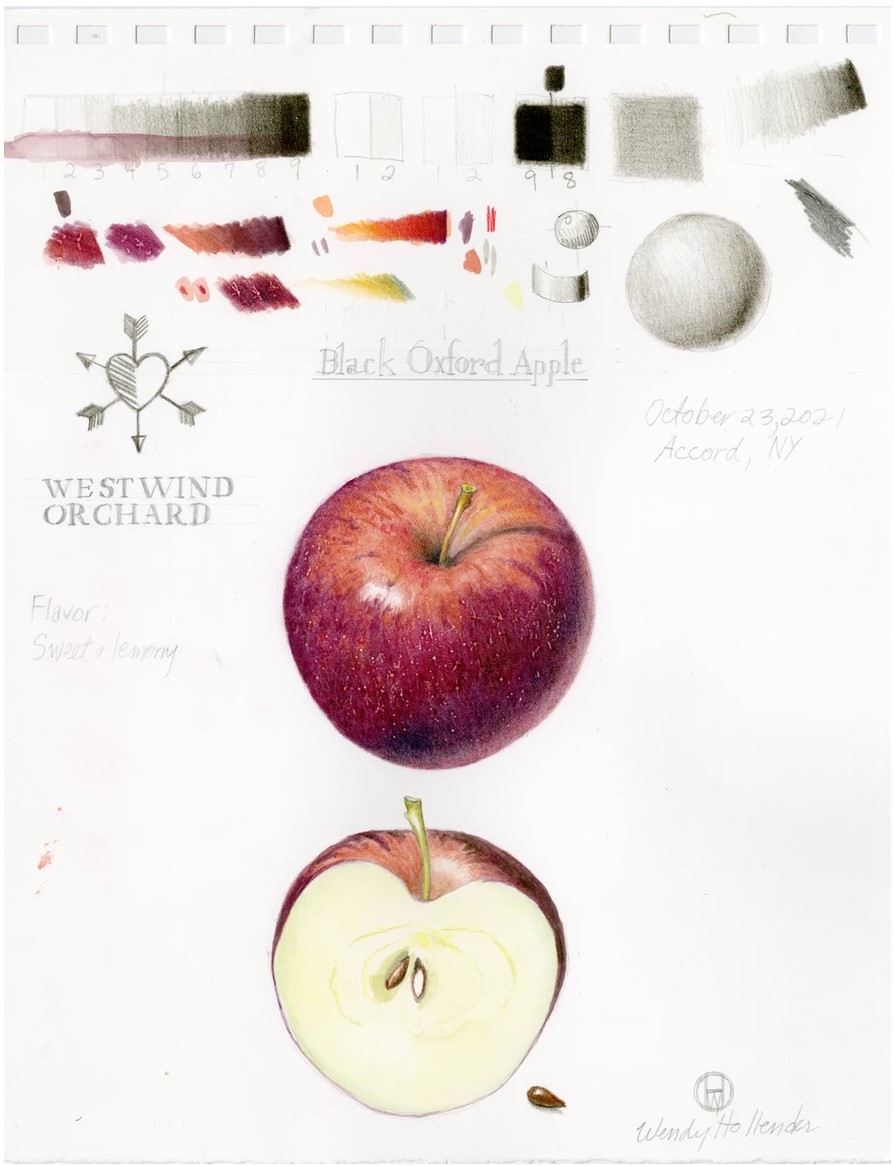
We always worked from an actual live subject as a model, never using a photograph or copying someone else’s artwork. I was engaging all my senses – seeing how light and shadow interact with the form’s surface, feeling the texture, smelling the aroma, tasting edible plants, and with the quiet study and drawing that started to happen, I could even hear the birds singing and appreciate the gentle sound of my pencil moving across the paper.
The repetitive motion of my hand had the power to clear my mind. Many psychotherapists have proven that engaging all our senses helps us to relieve stress and anxiety and to be present in the moment, so it makes sense that I had never felt so serene. This newly acquired stress relieving practice would serve as a critical coping tool for what I was about to experience in my life.
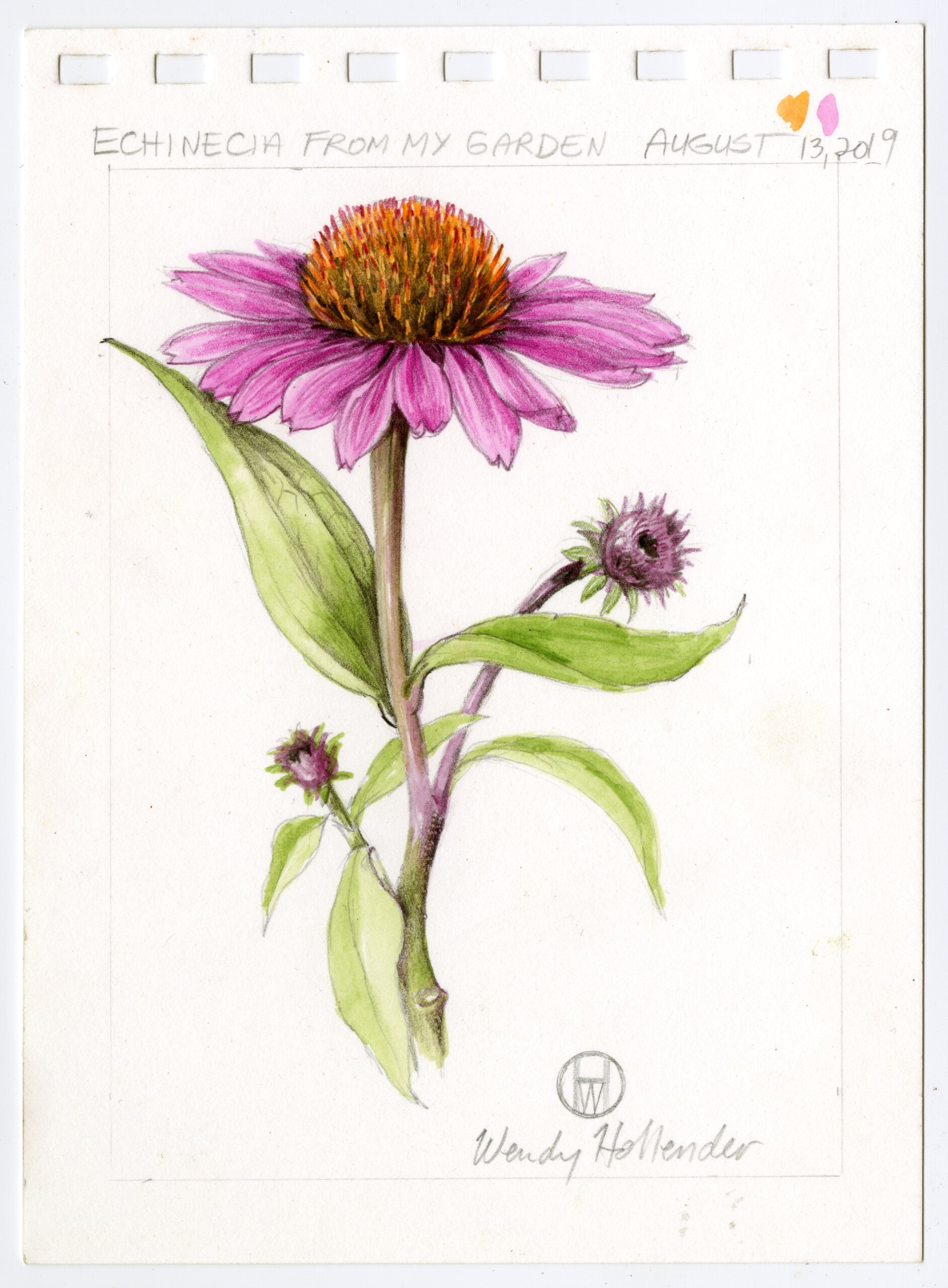
A Personal Healing Journey
Within a few months of beginning my botanical drawing practice, I found myself in an unfortunate situation, with a diagnosis of breast cancer started a year-long journey full of 5 surgeries, 6 months of chemotherapy, and 30 days of radiation treatment. This gave me plenty of opportunity to sit quietly and draw with my pencil, paper, and whichever fruit or flower I happened to find that day. I felt very fortunate to have botanical drawing as a new coping tool to help me in my healing journey.
When panic woke me in the middle of the night, I would draw. In hospital waiting rooms, exam rooms, and treatment rooms, I would draw. When I didn’t have energy to get out of bed, I would sit and draw. Drawing helped me focus, not just on something else, but on something that felt good. Most importantly, it kept my mental state in the positive zone, without becoming depressed, overwhelmed, or overly anxious. I think this helped me to heal much quicker.
Botanical Drawing Meditation
Now 25 years later, I am still in that positive zone, endlessly creating botanical drawings and teaching thousands of students the techniques that I have learned, developed, and used. Even though botanical drawing is now my day job, I still use the practice to help me de-stress and relax. I find that as little as 20 minutes of drawing can help focus my anxious energy and improve my mood.
After much personal practice, I introduced this 20-minute drawing meditation into some of my workshops. Students really loved it, so I taught some new workshops focusing on botanical drawing as meditation. Try to reserve 20 minutes in your day to use this practice and see how you feel.
I encourage you to try Botanical Drawing Meditation just for the pure joy and relaxation it brings without worrying about the results! Many people don’t consider drawing as an option because they think that you need to be extremely talented to practice, but truthfully, you don’t have to be talented. You don’t even have to be good. Just focus on your joy, and you will improve your drawing skills along the way by mixing colors and other basics of combining watercolor pencils and colored pencils.
Allow yourself the luxury of not being an expert, practice being a beginner, and have FUN!
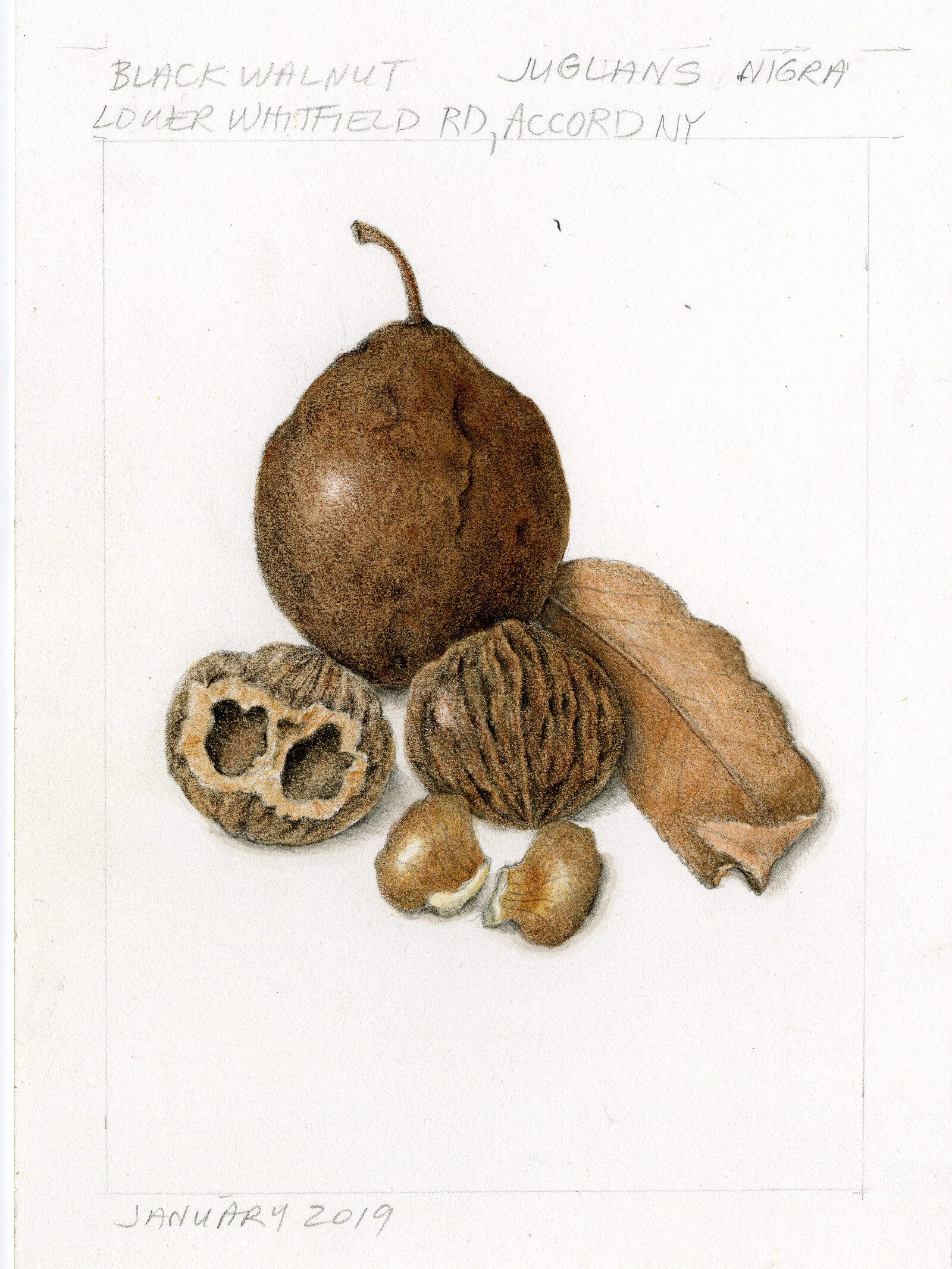
Benefits of Botanical Drawing
Botanical drawing provides relaxation in many ways. Here are my “top 3” reasons for why botanical drawing is such an effective tool for de-stressing.
1. The repetitive act of stroking a pencil with slight friction on paper in a slow methodical building of tonal layers with variation from light to dark that helps to facilitate concentration.
2. The use of color for blending and building the layers of color helps to enhance focus because it is so joyful to be surrounded by color.
3. The experience of ‘up-close-and-personal’ study of plants provides an all inspiring and uplifting experience.
Connecting with a plant one part at a time, from stem to leaf, from flower to its individual petals, and intimately exploring every detail, color, and pattern presents us with a magical glimpse inside nature’s window. Only there, under close observation, and sometimes with magnification, will nature’s innermost structural secrets be revealed through different repeating patterns that can amaze us over and over again.
Because nature is part of the landscape, it sometimes fades into the background, and we don’t realize the miracle of life that is quietly taking place right outside our door. Every living thing is created to instinctively know how to flourish, survive, and reproduce in order to ensure their continuing future. Seeing this up close is heartwarming, reassuring, and nurturing. Nature’s way of creating life forms is nothing short of miraculous, and it happens quietly for us to see, if only we take the time to do so.
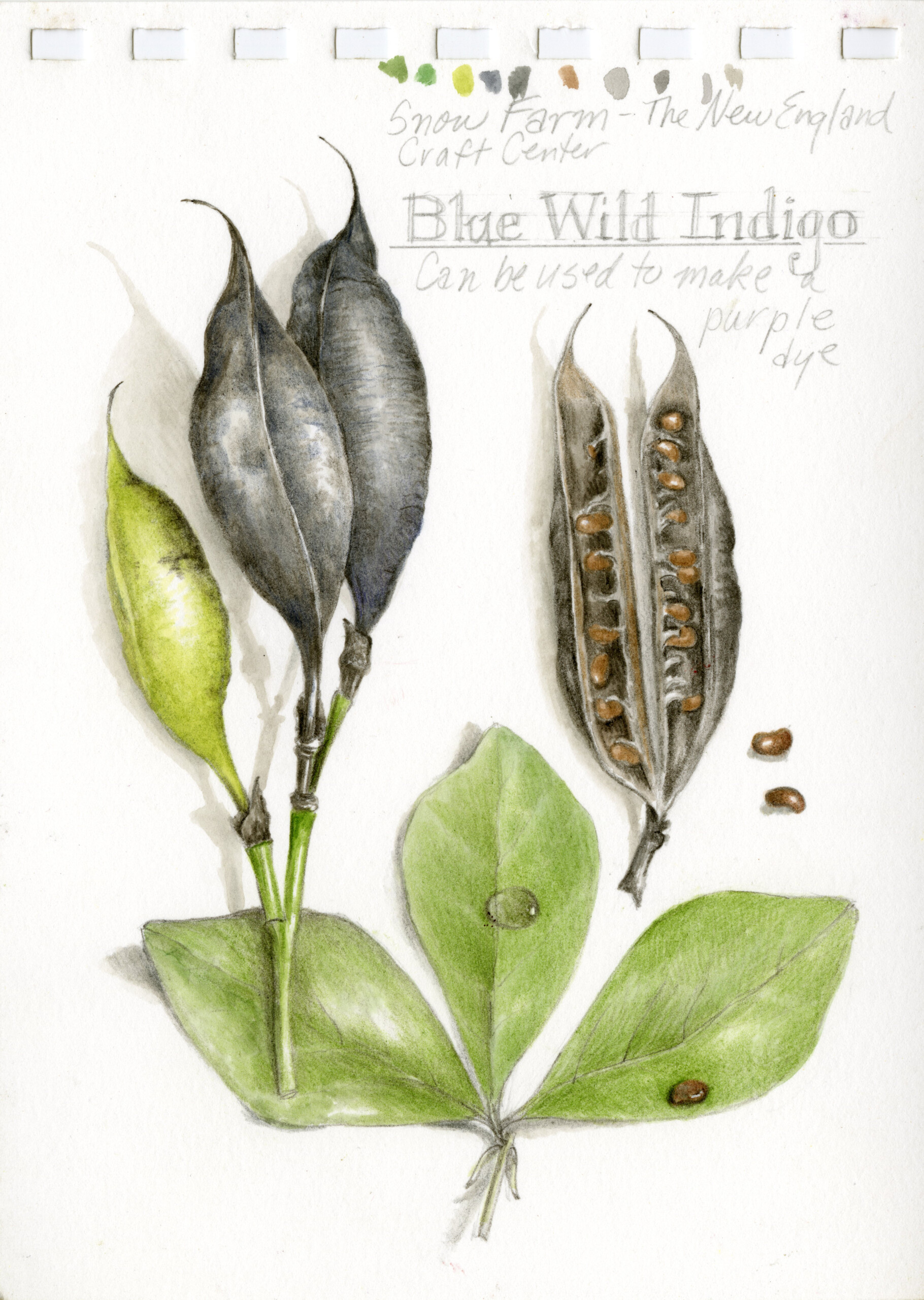
Basic Lessons
Drawing is relaxing, from the feeling of the friction of pencil on paper to the simple repetitive motion of the hand. It helps us to focus on the present, empty our mind of distractions, and dismiss annoying thoughts. This is why so many people doodle when talking on the phone, listening to a lecture, or waiting for your train to arrive – it channels our jittery energy.
The following Botanical Drawing Meditations illustrate the relaxation and calm experienced with this simple, yet effective practice. Enjoy!
Lesson 1: Botanical Drawing Meditation
Allow 20 minutes to try this toning relaxation technique. Toning is a term that describes light and shadows. It is a technique botanical artists use to make forms look realistically three-dimensional, as if you could touch them and pick them up off the page. Before you begin to add these tonal variations of value onto a subject, it is best to initially practice on individual tonal squares, as follows:
With a soft pencil and piece of paper, sit at a table in a comfortable chair with a supportive back. Plant your feet on the ground. Take a deep relaxing breath, and release any tension in your body, especially in your drawing hand and arm.
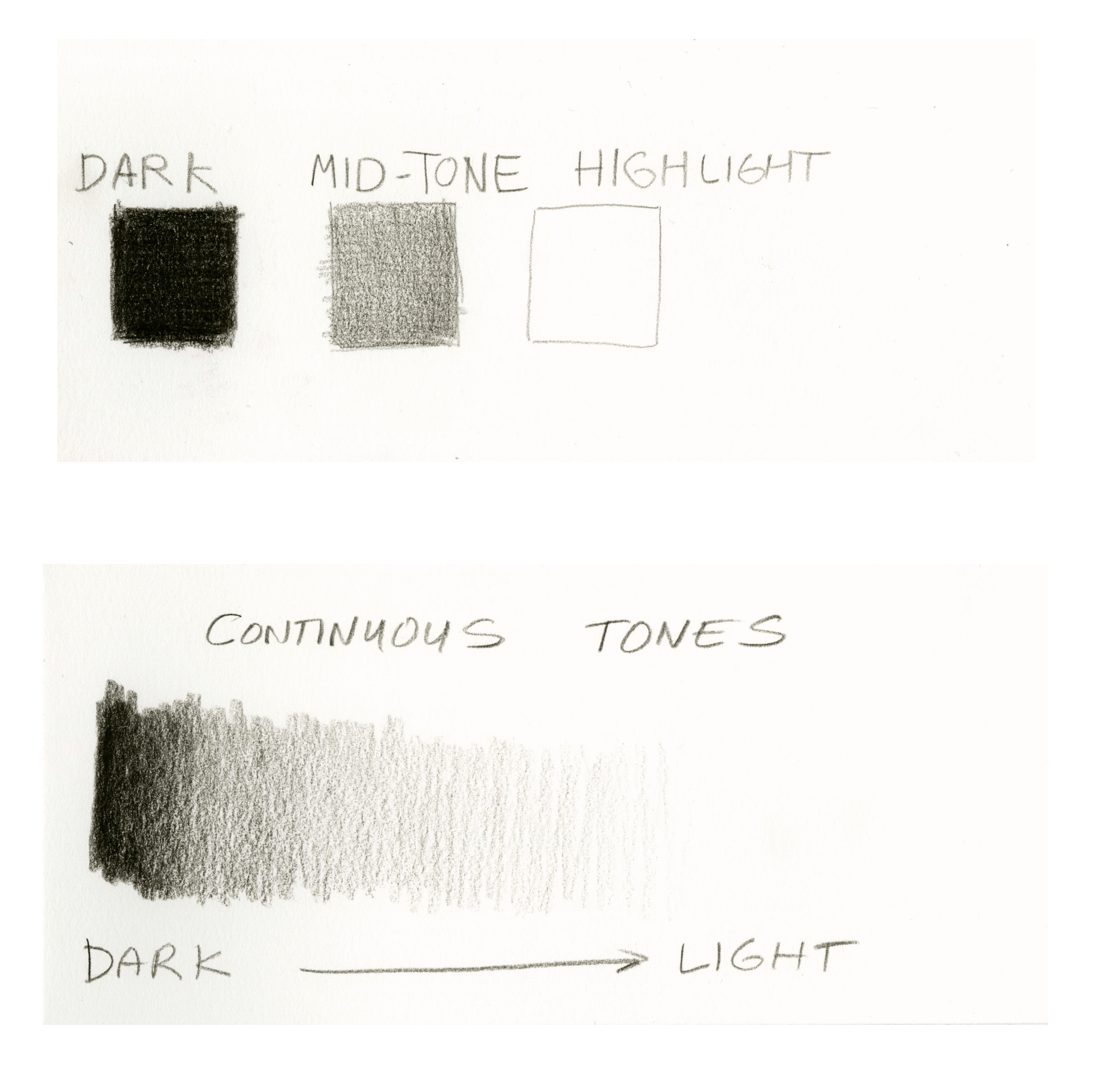
Begin to lightly stroke the paper with the pencil, confining to a one-inch square area. Notice the feeling in your fingertips of the friction as your pencil skates across the paper. Be aware of what develops on the page as the texture and lines appear. Continue to build layers of pencil on your one inch square slowly with gentle strokes until you have reached a value that is as dark as your pencil can make. Next create another tonal value square about half as dark as your darkest square. Afterwards practice “continuous toning” from as dark as your darkest square, graduating all the way to the lightest value of your paper in one motion, starting to build dark layers that gradually get lighter and lighter.
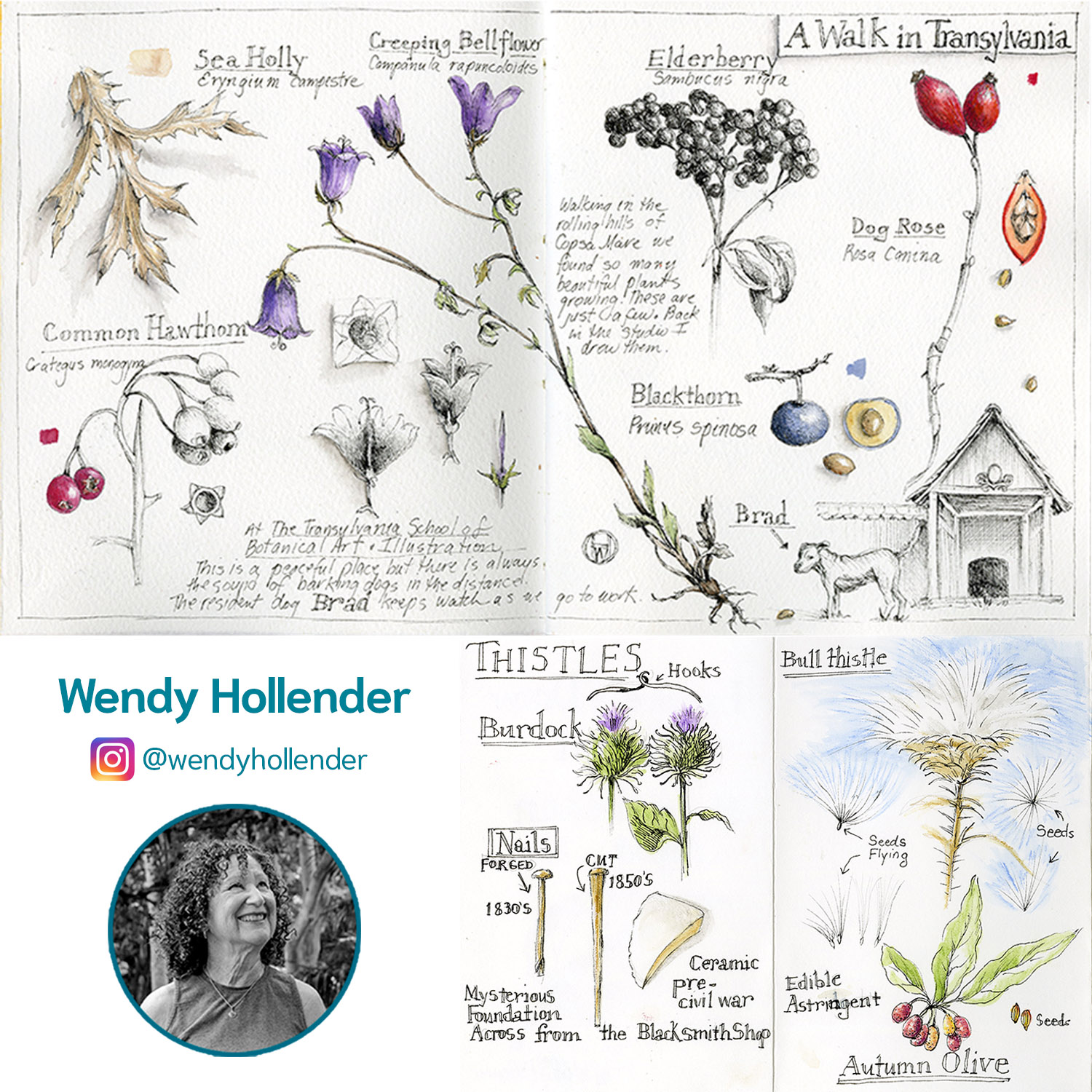
Lesson 2: Nature Journaling
A crucial part of botanical drawing is to try to work with a live subject. I like to do this scavenger hunt kind of drawing, which I will share with you as another 20 minute drawing meditation. This lesson focuses on the creation of a nature journal, which combines botanical drawings with words.
Let’s begin by taking a walk outside near a garden, a wooden path or some other natural environment. Now purposefully look at the ground and find one simple subject you would like to draw, perhaps a small branch, seed pod, or leaf. Bring it back inside, or sit comfortably outdoors with pencil and paper on a stiff surface, and spend 20 minutes looking closely at your subject. Lay your chosen object on your paper, and draw it life-size, right next to the real subject.
Don’t worry about how the drawing looks! Just enjoy studying nature closely and trying your best to copy it.
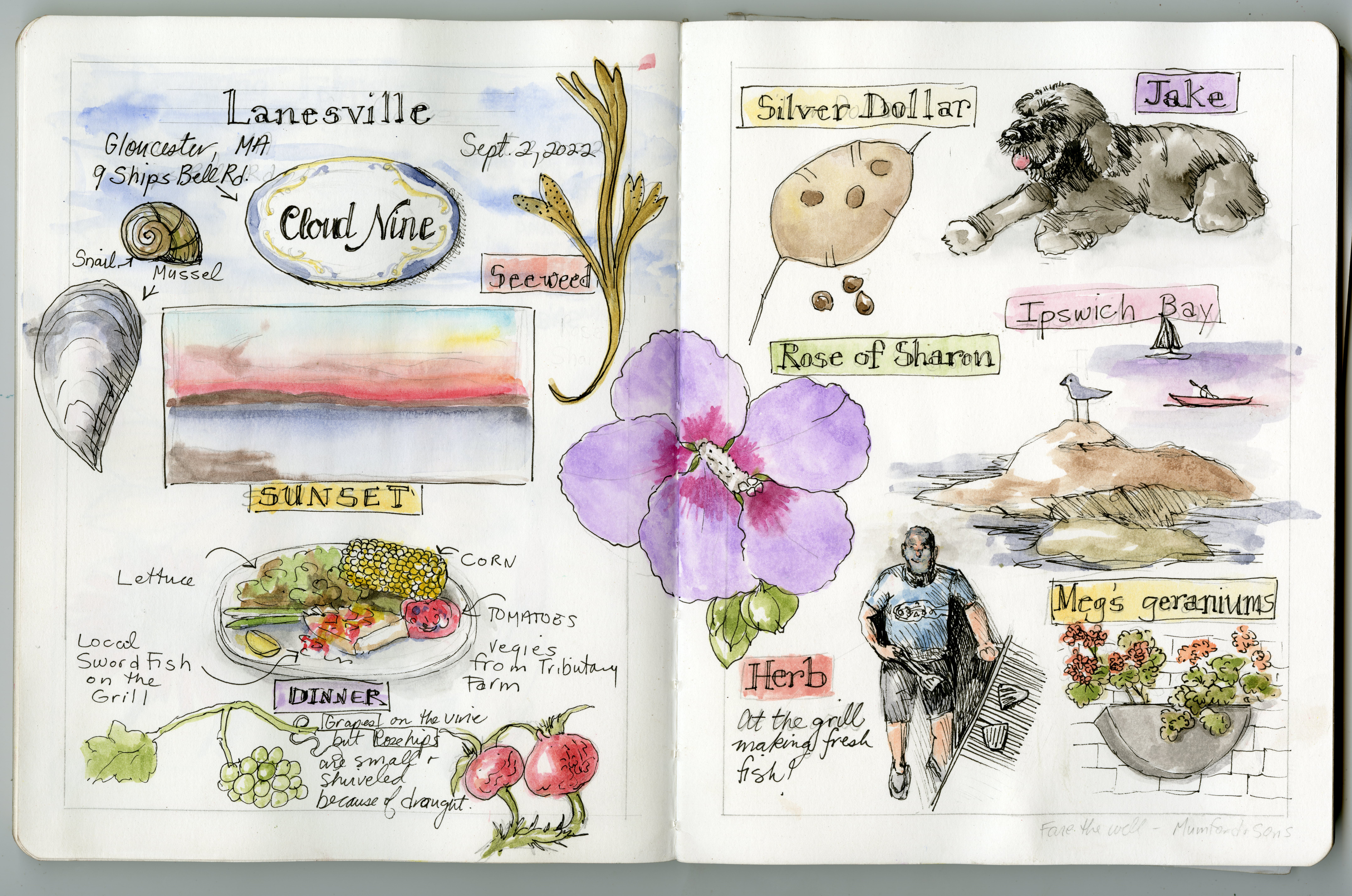
For a more journal-style page, write down some notes such as the date, location where you found your subject, name of subject, and any other things you discover or wonder about your subject. Include any questions you have (and perhaps find the answers later). Draw with a pencil or a fine point marker. You can even add in some color with colored pencils or watercolors. Try this for 5 days.
Each day, select a different found subject and practice these lessons. Soon you will have a collection of these simple drawing meditations that remind you what a pleasure it is to draw and intimately connect with nature.

Author Comments:
If you enjoyed these drawing sessions, you will probably be curious to continue learning the techniques of botanical drawing! I promise that these techniques will continue to be fun and relaxing, and eventually you will be amazed at your own ability to observe nature and start to create descriptive drawings. To go further with this practice, please feel free to get one of my books on Botanical Drawing Techniques, or sign up for my online subscription program to learn these techniques by watching and drawing from videos.
The basic techniques that are covered are as follows:
- Basic toning techniques to create value variation
- Understanding how to set up and use a consistent light source to create a three dimensional form
- Measuring and drawing in perspective to create accurate drawings
- Mixing realistic colors in nature
- Studying plant structure and learning some basic botany to deepen your knowledge of plants
- Nature Journaling Basics
Books by Wendy Hollender:
1. The Joy of Botanical Drawing: A Step-by-Step Guide to Drawing and Painting Flowers, Leaves, Fruit, and More, 2020
2. Botanical Drawing in Color: A Basic Guide to Mastering Realistic Form and Naturalistic Color, 2010
3. The Practice of Botanical Drawing, 2017
4. Botanical Drawing, A Beginner’s Guide, 2007
5. Nature Journaling in a Nutshell, 2023
Online Subscription Program: https://drawbotanical.com/courses
Prints of artwork available at: https://drawbotanical.com/product-category/prints/
Original art of Passion Flower available by request to: info@drawbotanical.com
Featured by the American Institute of Stress in their magazine, Contentment, Volume 12, Number 1, Spring 2023
